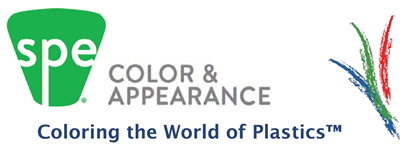The Impact of Modern Lighting on the Colors in Plastics Design
[one_half]Dr. Danny C. Rich
Senior Color Physicist
Sun Chemical Corporation
Color Research Laboratory
Dr. Rich obtained his Bachelors degree in Physics from the University of Idaho in 1973. He received a Masters degree in Physics in 1977 from Virginia Polytechnic Institute and State University in Blacksburg, Virginia. He received a Ph.D. degree from Rensselaer Polytechnic Institute working under Dr. Fred W. Billmeyer, Jr.
He has worked for the Sherwin-Williams Company as a group leader, for Applied Color Systems, Inc. in Princeton, New Jersey which became part of Datacolor International. Dr. Rich held the position of manager of Advanced Colorimetry and Metrology.[/one_half] [one_half_last]
[/one_half_last]In 1998 Dr. Rich joined the Sun Chemical Corporation to direct the Sun Chemical Color Research Laboratory in the Daniel J. Carlick Technical Center, Carlstadt, New Jersey. His team was responsible for the SmartColorTM product which was awarded a Thomas Alva Edison award for innovation by the Research Council of New Jersey. Dr. Rich has published on all aspects of Color Science and Engineering.
Abstract
Solid state lighting in the form of light emitting diode lamps is quickly taking over the world as replacements for existing lower efficiency lamps. The lighting standards, which phased in from 2012-2014, do not ban incandescent or any specific lamp type, but they do require that lamps need to use about 25% less energy. The bipartisan Energy Independence and Security Act of 2007 (EISA 2007) established these efficiency standards. Many commercial lamps meet these new standards, including halogen incandescent filament, CFLs, and LEDs. The new lamps provide a wide range of choices in color and brightness, and many of them last much longer than traditional lamps. But the spectral distribution of flux from some of these new lamps do not match or even correspond to the spectral power distribution of traditional office and home lighting. In this review, the impact of the new lamp lights on the design, marketing and production of modern decorative coatings is assessed. The engineering plastics industry has followed recommended guidelines from many decades, producing color matches that are acceptable under a series on standard illuminants (D65, CWF, A) that were representative of the lamp lights in most common facilities. The new solid state lamps do not render object colors in ways similar to the currently adopted standard illuminants. This paper will examine the impact of CFL and SSL lighting on a number of well recognized brand colors. The primary obstacle to manufacturers of plastic and plastic products is the lack of standards on how to test color matches for quality conformance under the new lamp lights. Recent work in other color product industries and standards writing organizations will be highlighted.

